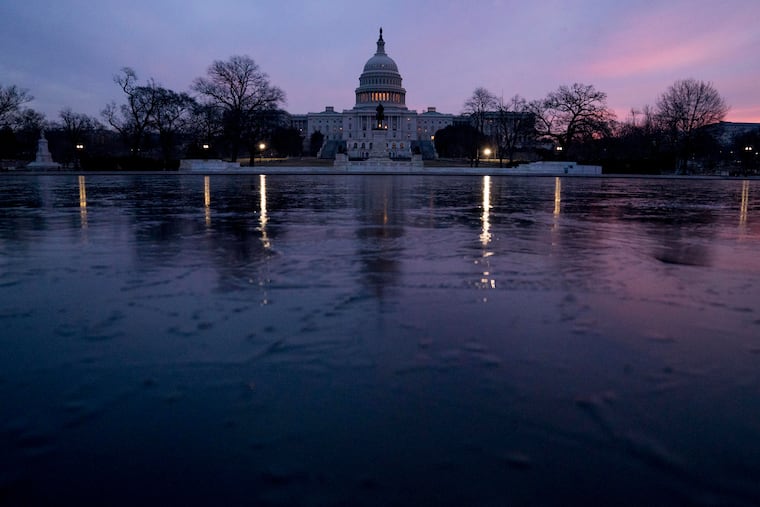U.S. government is set to spend $1,000,000,000,000 more than it earns. Who’ll pay for it?
The budget deficit is ballooning. In the last full fiscal year of the Obama years, deficit came in at $580 billion. That was uncomfortably high but nothing compared to this fiscal year’s deficit, which is set to blast through $1 trillion.

Once upon a time, our political leaders took their stewardship of the nation’s finances seriously. In fact, the only way to win an election was to espouse fiscal discipline. That meant prudent tax and spending policies. If they didn’t quite pay for themselves, at least those policies didn’t blow out the budget deficits and add significantly to the national debt.
This is no longer true. Even Republicans, long thought of as steadfast in protecting the U.S. Treasury, have given that up under the Trump presidency. The budget deficit is ballooning. In the last full fiscal year of the Obama years, the deficit came in at $580 billion. That was uncomfortably high but nothing compared with this fiscal year’s deficit, which is set to blast through $1 trillion.
The nation has suffered larger deficits (as a percentage of the overall economy) but only a few times and only when the economy was struggling to cope with severe recessions.
Even more disconcerting, according to the Congressional Budget Office, the nonpartisan government agency that does the bean counting for the federal government, if we don’t take a U-turn on current tax and spending policies, our collective finances will end in a train wreck. The deficit will never again be less than $1 trillion, and even this forecast makes the unrealistic assumption that there won’t be another recession.
Last year’s massive tax cuts made things much worse. Lawmakers who argued that the cuts would pay for themselves by jump-starting sustainably stronger growth and thus much more tax revenue were completely off base. Revenues are plunging. This is despite some sizable, but fleeting, sources of additional revenue, including the higher tariffs that are part of President Donald Trump’s trade war.
Hope that the tax cuts for businesses would incent them to invest more, supporting stronger long-term growth, looks more and more like a pipe dream. Corporations’ effective tax rate — the taxes they pay as a percent of their profits — has been cut in half to an all-time low but hasn’t unleashed more investment, at least not yet.
Also adding to the deficit is a lot more government spending. Last year, lawmakers agreed to big increases in both defense and non-defense outlays that are just now kicking in. The Trump administration was willing to give Democrats more dollars for a range of social programs in exchange for more dollars for defense.
There were a few faint calls for restraint and reforms, particularly to the large entitlement programs Social Security, Medicare and Medicaid. But those calls were quickly drowned out by the bipartisan agreement to spend more. The federal government’s purse is wide open.
The fiscal red ink is a corrosive. It won’t tank the economy next year or even a decade from now, but it will steadily diminish it. Because a big deficit means the government must borrow heavily to pay its bill, all borrowers need to pay higher interest rates than they would otherwise. Businesses find it is more expensive to finance their operations, weighing on their hiring and investment. This may not matter much in any given year, but over the years it means the economy will be meaningfully smaller than it would have been otherwise.
To rein in the nation’s deficits and debt will require both higher taxes and spending restraint. The increased tax burden can fall only on wealthy and high-income taxpayers, simply because that’s where the money is. The spending restraint must fall on the health-care system, because its outsized growth in caring for the elderly and poor is busting the government’s budget.
The economic threat posed by our fiscal profligacy isn’t too different from the humanitarian threat posed by climate change. Neither will do us in tomorrow or even in the near future. But unless these problems are addressed soon, they will do serious damage. They will ultimately be cataclysmic if we fail to find the political will to respond.
Unfortunately, it doesn’t look like Washington is capable of doing much of anything anytime soon, let alone tackling the daunting challenge of raising taxes and reining in spending. Lawmakers can’t even keep the government open, as they bicker over whether to fund the construction of a wall between the U.S. and Mexico. This is even before the investigations into the president’s potential misdeeds come to a head.
Political gridlock does mean lawmakers won’t be able to pass bad legislation. Trump said before the election that if Congress remained Republican, he would pass another tax cut. That would have been especially bad policy. Another tax cut would only add to the ballooning deficits. However, doing no harm is not a strategy for getting our fiscal house in order.
_________________
Mark Zandi is chief economist at Moody’s Analytics. Reach him at help@economy.com